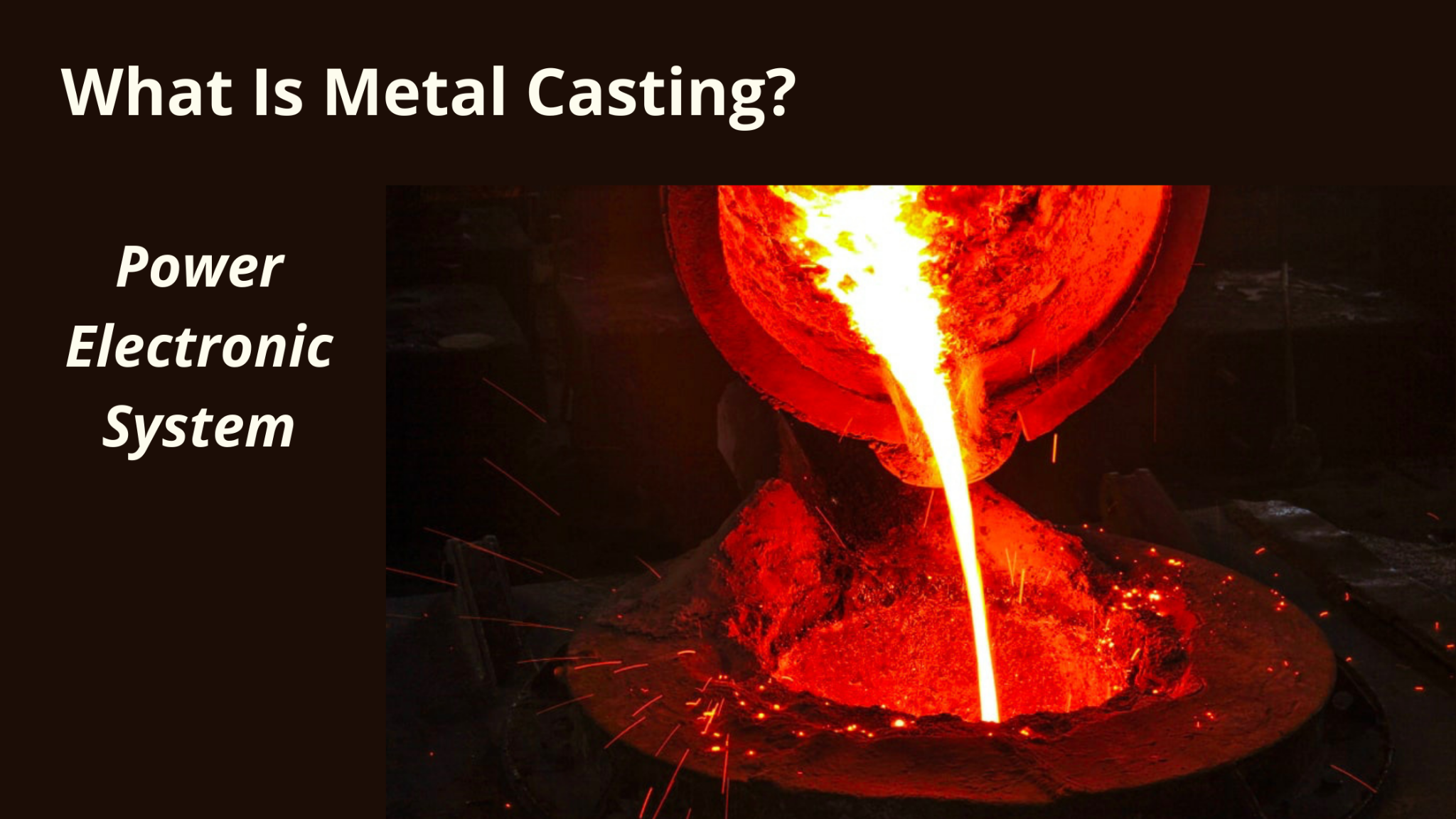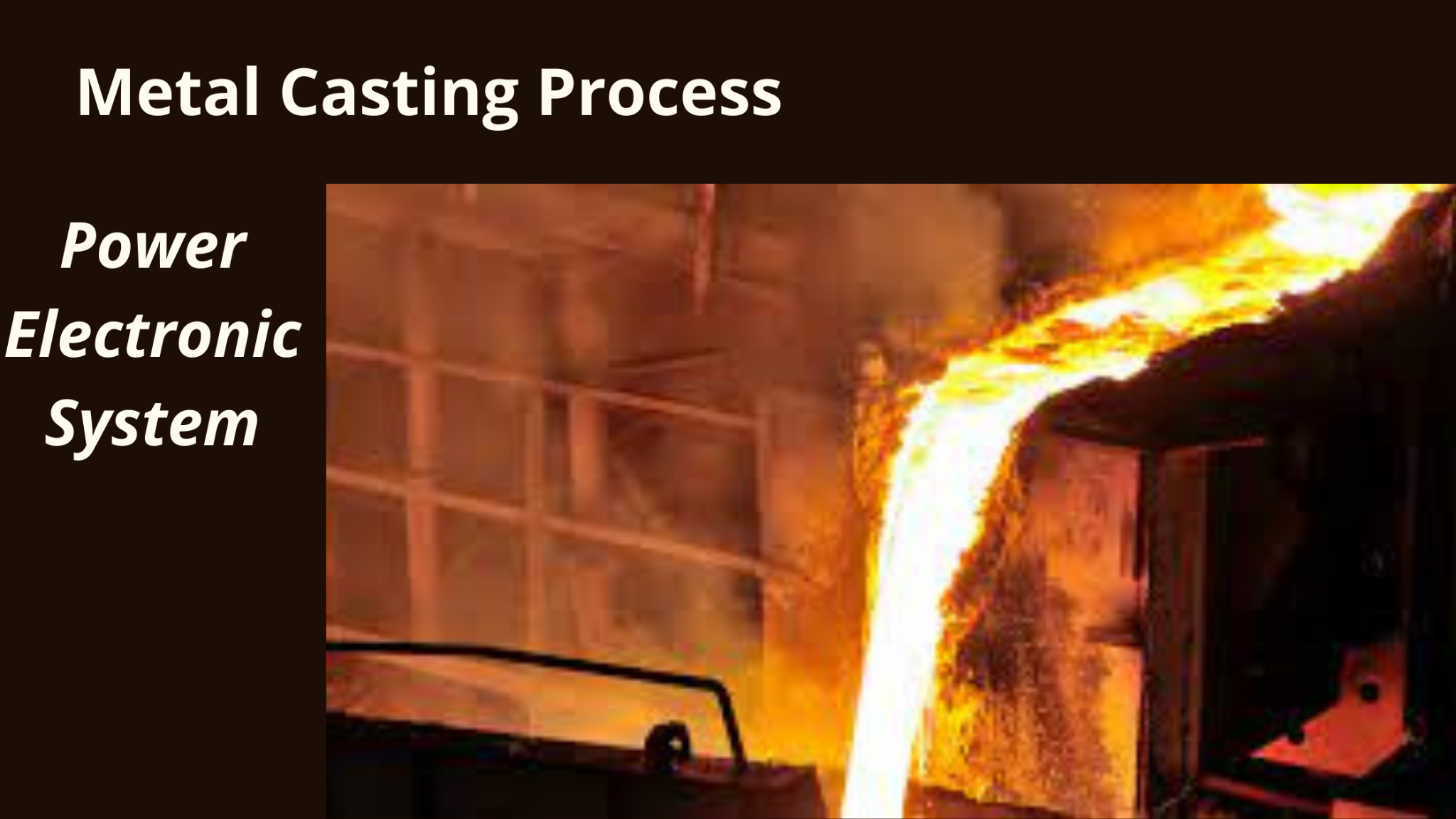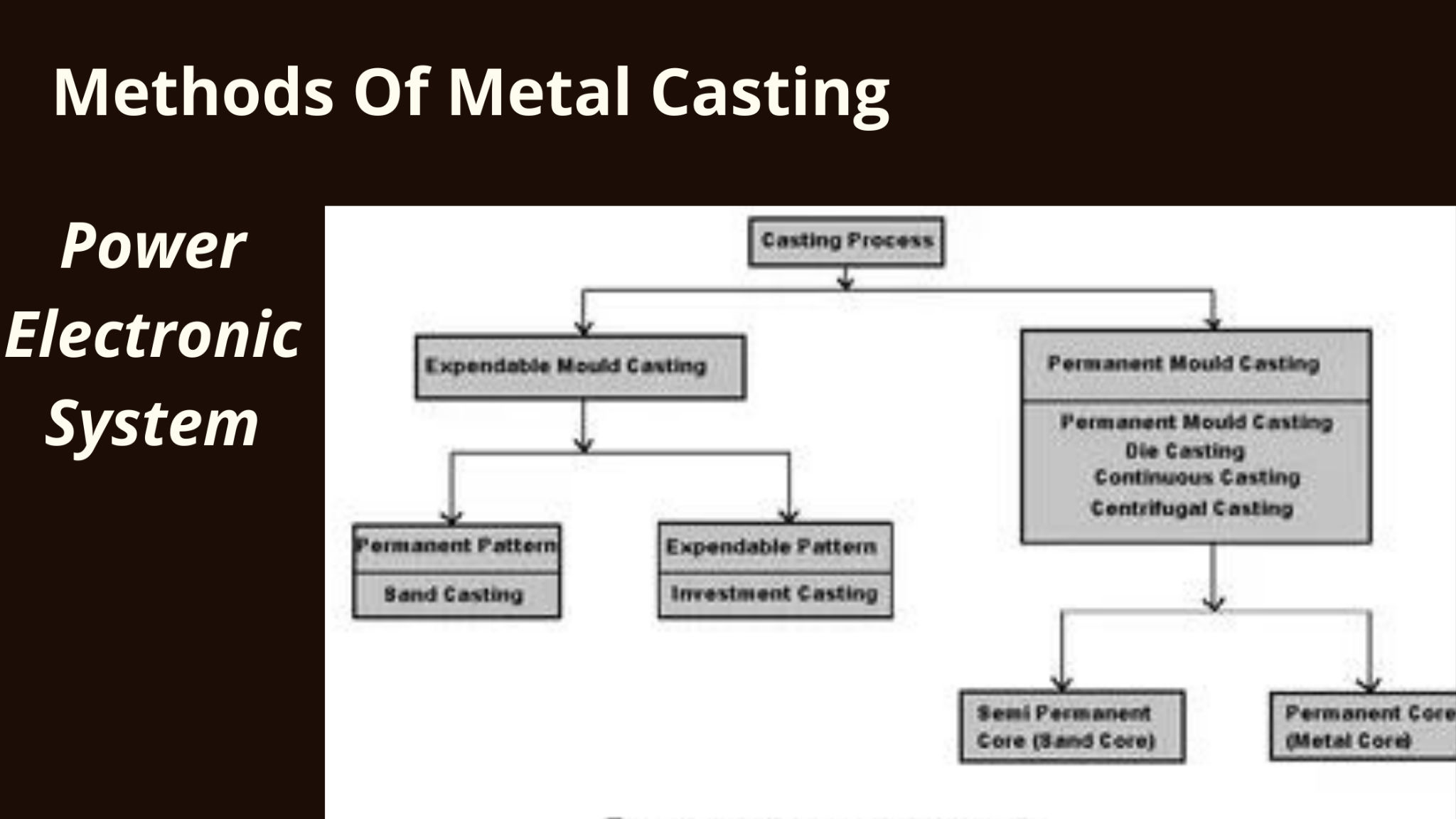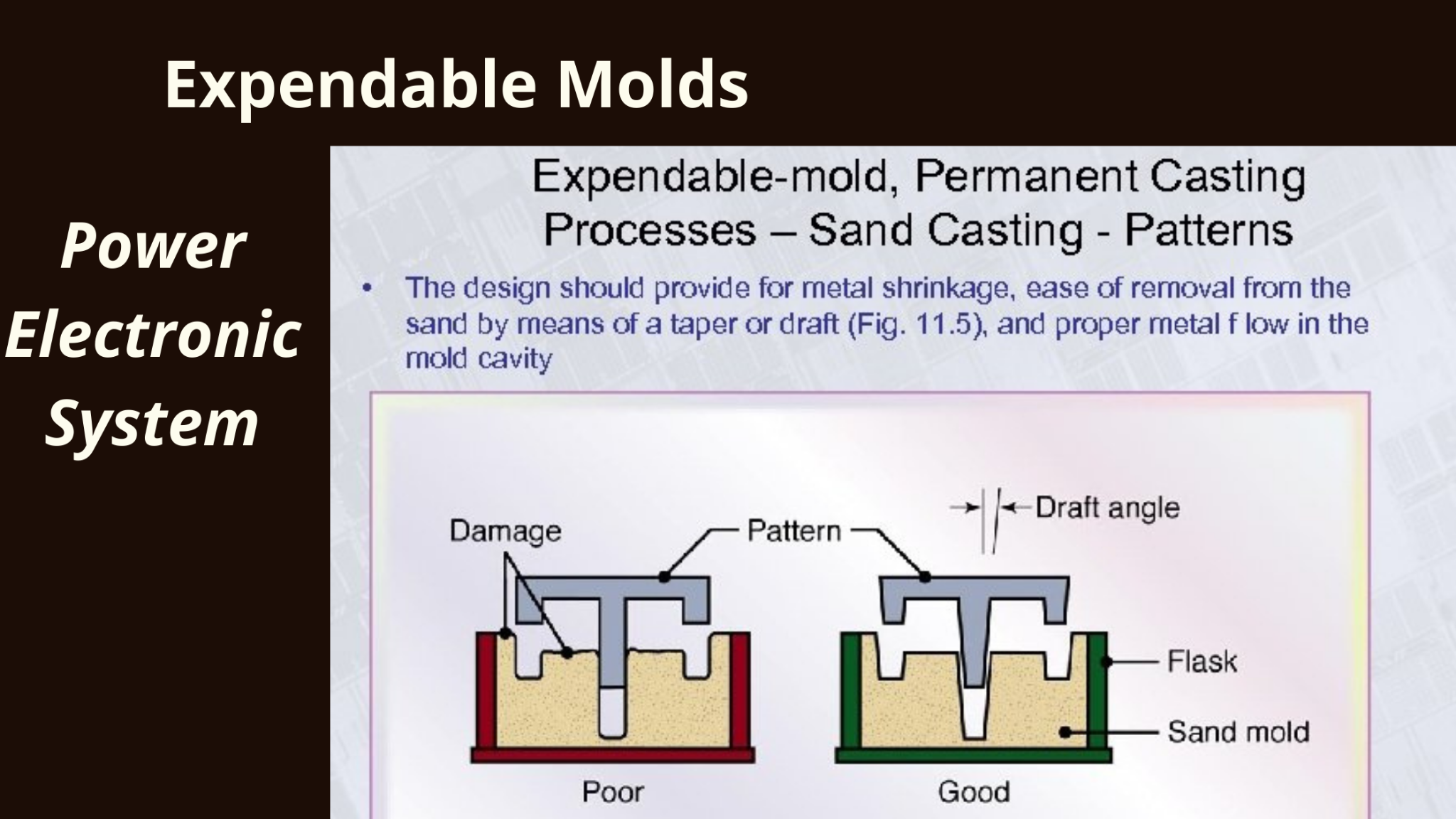November 2021,
Metal Casting
Metal casting is an ancient process, not much different from how things have been done for centuries. It has its roots in blacksmithing, which began with men heating iron in large fires to extract the pure molten metal. However, at the intersection of technology and metal casting, there are plenty of modern advances that make this old-world artistry more accessible to the everyman.
The Indian civilization used metal casting in bronze from the East and later introduced tin from China to Europe. The founding of metal casting can be traced back to ancient India, where bronze objects such as ornamental beads and chakras were cast in large quantities.
What is Metal Casting?
Metal Casting is the process in which liquid metal is poured into a molten or molten state to form a desired shape or article. The liquid metal can be either cast "in situ" onto the surface of another piece of material, or "in the sand". In layman's language, Metal casting refers to the process of shaping a liquid metal into the desired form by pouring the liquid metal into a mold and then hardening it.
In Modern days, the Metal Casting industry is an important economic force in the world, one that will continue to expand in the future. The improvements in recent years, with the help of new advances in technology, have led to it becoming an increasingly popular process for manufacturing products at home and in businesses.
When metal casting was first introduced, it was simply a normal procedure, but as time went by and technology advanced, the industry became much easier and more convenient. The traditional methods that were used before can now be replaced with cheaper and faster ways to accomplish your goals.
This process has been used for thousands of years, but today is most commonly used in manufacturing automobiles and other large-scale projects.
When metal casting was first introduced, it was simply a normal procedure, but as time went by and technology advanced, the
industry became much easier and more convenient. The traditional methods that were used before can now be replaced with cheaper and faster ways to accomplish your goals.
With the advancement of modern-day technology, there is a better solution than using the traditional method of metal casting. Today's market is filled with companies that offer specialized services in regards to metal casting.
Process of metal casting
The process of metal casting begins with the molten metal being poured into a mold, which is typically made of sand or clay. The material in the mold cools to form a shape with the molten metal left in place. When the desired shape is achieved, it can be removed from the melted ceramic shell leaving behind a solid wax-like shell that can then be re-melted for reuse.
As the molten metal cools, some of it solidifies (and thus can be removed) and others remain in the mold. The process continues until the desired amount of the final product is formed. The metal may then be removed from the mold or, alternatively, it may be allowed to remain in place until all of it is used up before melting again.
Metal casting's pattern making process entails many steps, some of them are mentioned below:
• Creating a model of the desired shape and size of the castings with wax or other modeling material or by machining it out of wood or other material.
• Creating the pattern (or mold) which will be used to produce the desired shape in the solidified metal.
• Making a permanent mold out of the material that is best suited for use with that particular metal; for example, sand can be used for making a brass mold and porcelain and epoxy for making a steel mold.
• It is then placed into a molding machine to build a cavity in which the molten metal can be poured. This cavity is usually shaped in a way that helps in the casting process. This cavity together with the pattern (or mold) together is called 'pattern and cavity' (PAC) assembly.
• After the cavity has been made, it needs to be cleaned out; this can be by using an air chisel or by using high-pressure air blasts. The cavity must be smooth and free of any imperfections.
Methods of Metal Casting
Metal casting is a manufacturing process that produces a ductile metal part, normally an engineering component. There are many different casting technologies in use today. Today, engineers use metal casting for a variety of purposes, including creating components for machines and even making life-sized human figures.
However, they come in two wide variety of processes with Reusable and processes with expendable molds.
Reusable Molds
There are two types of molds in metal casting, permanent and reusable.
A permanent mold is only used once; each product is poured into the mold at one time. The finished pieces are then taken out of the mold and cooled before machining (cutting). Because the product cannot be reused in this type of system, it must be disposed of. This can be costly when factoring in the transport of the casted piece to the machining area.
Also Read, SCR Thyristor
A reusable mold can be used to cast multiple pieces, greatly reducing waste and saving on material costs. After the cast is removed from the mold, it must be cleaned and prepared for its next use. The process can be repeated numerous times.
Permanent Mods
Permanent Molded Molds in metal casting is the process of using a mold to create molten metal pieces. The molten metal is poured into the mold and allowed to cool, usually by cooling air from the atmosphere.
This allows for more control over placement and shape than when casting dishware because no hardware such as flash pots or ladles has to be used. It is used to make identical product parts by simply filling it with molten steel or iron again and again until it needs to be replaced. Permanent molds are made of steel or iron for large prototypes.
Semi-Permanent Mods
Semi-permanent molds are the most common type of mold used in metal casting. Semi-permanent molds are not good for castings that will be used only once because they need to be repaired after each casting.
Semi-permanent molds can also be used to create specialized castings, which would have been impossible if they were not being created with a mold. Semi-permanent molds are made of various materials, including wood, plaster, and plastic.
Wooden molds are the oldest type of mold that was used in metal casting. Wooden molds were commonly used to form items that would be used daily or annually because they were relatively cheap and easy to repair after each use.
Slush casting
slush casting is a type of melting and pouring process used in the melting and casting of metal. Metal that has been poured into a mold may be removed, re-melted and poured into new molds. This is usually done by filling up the mold with liquid metal, then freezing it and quickly quenching it from within the mold to solidify it. These can be used many times.
Centrifugal Casting
Centrifugal casting is the process of pouring liquid metal into a mold at high speed, causing it to solidify in the form of an object. This process reduces the size of the mold and allows for multiple castings using small molds or cores that can then be melted down or reused.
Centrifugal casting is used to melt metals that are difficult to weld, such as stainless steel. The thickness of the metal being cast is important so the centrifugal casting process is usually only used for pouring low melting point metals. It also allows for pours of very complicated shapes, so objects can be produced with intricate details where welding would be difficult or impossible.
Pressure Casting
pressure casting method use force to control the metal in the permeant mold. Pressure casting is a production process used in metal foundry for casting. It is also referred to as hydrostatic pressure casting by some process, which includes the use of vacuum, high pressure, or controlled atmospheric pressure.
The term Pressure Casting can be used for any of these methods .Pressure castings are lost wax processes that allow for the use of certain types of metals which are not suitable for other types of molding due to their specific properties. Commonly used metals include aluminum, zinc, brass, bronze, copper and steel.
Die Casting
In metal casting, die casting is a method of producing a solid object from a liquid material with a hollow interior. It is in contrast to sand casting which is used in the production of objects with cores.
The die or blank is usually made from an investment or investment-grade malleable iron that when heated to red heat, forms the inside cavity when it cools down. A method of manufacturing, as well as a process of making the metal casting. It is used for producing objects with multiple cavities such as car body and motorcycle parts.
Continous Casting
Continuous casting is a production technique used for mass production of product plastic products and glass, and it has been recently applied to metal casting due to the significant cost savings. The advantages to continuous casting include less scrap material and quicker production due to the ability to produce more liquid at any time.
Expendable Molds
Expendable molds allow for the casting of only one type of part before the mold must be disposed of. The shape of the part can literally be anything as long as it fits into the mold properly, but often they are designed for simple shapes that can easily be reproduced consistently.
These are typically made with steel or higher density plastic. These molds are usually used in mass production because of their low cost and high efficiency. These molds are shaped so that when the molten metal is poured into it, it forms a part. Once the metal has been allowed to solidify, the mold is broken apart to reveal a finished part.
Also Read, Induction Furnace
Sand Casting
Sand casting in expendable molds is a metal casting method that is used when the casting process requires penetration of the mold. Sand castings are primarily used when multiple, or high-volume production is required.
Sand castings exhibit greater dimensional stability than other expendable mold methods because the silicone-sand mixture has much lower thermal conductivity than water and can withstand high heat much better.
The sand requires a time and energy intensive process to remove it from the mold and to produce a smooth finish. Sand casting in expendable molds is limited to low production numbers when mold making and the associated tooling costs are factored into the cost of production.
Shell Molding
shell molding is a process that involves creating a mold from the inside out. In other words, the object being molded will be packed in a cavity full of molten metal and then solidified. Shell molding is used to create molds with finer resolution than injection-molded parts.
In the model cast shell molding process, the molding cavity is filled to a given level with a molten metal alloy. The molten metal is poured in until a specified level is reached, and it solidifies.
Investment casting (lost-wax casting)
Investment casting (lost-wax casting) is a special type of metal casting process that creates patterns, impressions, or designs by depositing heat and molten metal in the shapes of the desired article. This term refers to a production technique performed in large numbers outside of foundries.
There are multiple lost wax investment castings in expendable molds for use with bronze, ductile iron, copper/brass/bronze alloy or steel. The main drawback to sand casting in expendable molds occurs with production runs under 10 pieces due to difficulty in demolding and finishing. It is used widely in automobiles, military and household appliances and tools.
Full Mold Or Foam Casting Process
In metal casting, the ingredients of a mold are poured into a cavity that is created by a mold. When the ingredients have cooled to a temperature that will support their shape, they are then called "pourable" and can be easily removed from the mold.
This can be done by using different tools including expanding foam or wood that are inserted between the mold and the part being poured, which forces the molten metal to fill all cavities. The purpose of foam is to create a surface tension which has an outward force on all sides of the cavity while keeping parts inside the cavity in place.
Visit:- Official Website



